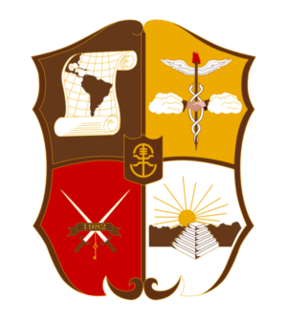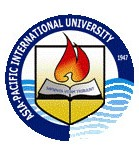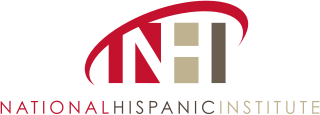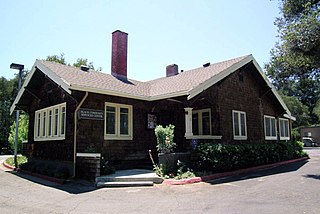
Brown University is a private Ivy League research university in Providence, Rhode Island. Founded in 1764 as the College in the English Colony of Rhode Island and Providence Plantations, Brown is the seventh-oldest institution of higher education in the United States and one of the nine colonial colleges chartered before the American Revolution.

The State University of New York at Albany, commonly referred to as the University at Albany, UAlbany or SUNY Albany, is a public research university with campuses in Albany, Rensselaer, and Guilderland, New York. It was founded in 1844 and is one of the "university centers" of the State University of New York (SUNY) system.

North Carolina Agricultural and Technical State University is a public, historically black land-grant research university in Greensboro, North Carolina. It is a constituent institution of the University of North Carolina System. Founded by the North Carolina General Assembly on March 9, 1891, as the Agricultural and Mechanical College for the Colored Race, it is the second college established under the provisions of the Morrill Act of 1890, as well as the first for people of color in the State of North Carolina. Initially, the college offered instruction in agriculture, English, horticulture and mathematics. In 1967, the college was designated a Regional University by the North Carolina General Assembly and renamed North Carolina Agricultural and Technical State University.

Loyola University Maryland is a private Jesuit university in Baltimore, Maryland. Established as Loyola College in Maryland by John Early and eight other members of the Society of Jesus in 1852, it is the ninth-oldest Jesuit college in the United States and the first college in the United States to bear the name of St. Ignatius of Loyola, the founder of the Society of Jesus.

Proposition 209 is a California ballot proposition which, upon approval in November 1996, amended the state constitution to prohibit state governmental institutions from considering race, sex, or ethnicity, specifically in the areas of public employment, public contracting, and public education. Modeled on the Civil Rights Act of 1964, the California Civil Rights Initiative was authored by two California academics, Glynn Custred and Tom Wood. It was the first electoral test of affirmative action policies in North America. It passed with 55% in favor to 45% opposed.

Oakes College is a residential college at the University of California, Santa Cruz. It is on the southwestern corner of the campus, south of Rachel Carson College and east of the Family Student Housing complex.

La Unidad Latina, Lambda Upsilon Lambda Fraternity, Inc. is a Latino-based collegiate fraternity. It was founded at Cornell University in Ithaca, New York on February 19, 1982, and has 74 active undergraduate chapters and 15 graduate alumni professional chapters in universities and cities across the United States. La Unidad Latina, Lambda Upsilon Lambda Fraternity, Incorporated is the only Latino fraternity to be chartered at all 8 Ivy League universities. While founded on Latino principles, Lambda Upsilon Lambda has been open to men of all races since its inception. The fraternity is a member of The National Association of Latino Fraternal Organizations (NALFO) and is its third oldest fraternal member by founding date. It also has the second longest-running continuously active status at the collegiate level for the association.

Asia-Pacific International University is a private Christian university located in Saraburi, Thailand. Its main campus is in the rural town of Muak Lek, Saraburi Province and the nursing school is located on the grounds of Bangkok Adventist Hospital in downtown Bangkok. It is the only tertiary education institution serving the Southeast Asia Union Mission of Seventh-day Adventists. Asia-Pacific International University was formerly called Mission College until mid-2009 when it was granted university status. It is a part of the Seventh-day Adventist education system, the world's second largest Christian school system.

The National Hispanic Institute (NHI) is an international nonprofit organization dedicated to serving the future leadership needs of the global Hispanic community. Founded in 1979 in the State of Texas with the mission of serving the future leadership needs of the United States via the Hispanic/Latino community, NHI became the largest Latino youth organization in the United States. NHI is now an international organization with over 85,000 alumni worldwide and a well-known consortium of notable colleges and universities.

A Hispanic-serving institution (HSI) is defined in federal law as an accredited, degree-granting, public or private nonprofit institution of higher education with 25% or more total undergraduate Hispanic or Latino full-time equivalent (FTE) student enrollment. In the 2018–19 academic year, 539 institutions met the federal enrollment criterion.

The Black Community Services Center, originally known as the Black Student Volunteer Center, was established in 1969 in response to a series of Stanford University events resulting from the assassination of Martin Luther King Jr. in April 1968. Since then, the primary goals of the BCSC have changed from being a hub of political activity to a center promoting the personal, intellectual, and professional growth of students in the Black community.
The Black Action Movement was a series of protests by African American students against the policies and actions of the University of Michigan. The protests themselves took place on three occasions in 1970, 1975, and 1987. Many student organizations participated in the movement, which has been called one of the most challenging for administrators in the school's history. Alan Glenn of the Ann Arbor Chronicle said of the 1970 protests that "the BAM strike became one of the few protests of that era in which the students could make a valid claim of victory."
Transgender inequality is the unequal protection received by transgender people in work, school, and society in general. Transgender people regularly face transphobic harassment. Ultimately, one of the largest reasons that transgender people face inequality is due to a lack of public understanding of transgender people.
The Third World Liberation Front (TWLF) rose in 1968 as a coalition of ethnic student groups on college campuses in California in response to the Eurocentric education and lack of diversity at San Francisco State College and University of California, Berkeley. The TWLF was instrumental in creating and establishing Ethnic Studies and other identity studies as majors in their respective schools and universities across the United States.
In 1968, the Third World Liberation Front (TWLF), a coalition of the Black Students Union, the Latin American Students Organization, the Filipino American Collegiate Endeavor (PACE) the Filipino-American Students Organization, the Asian American Political Alliance, and El Renacimiento, a Mexican-American student organization, formed at San Francisco State University (SFSU) to call for campus reform. Another Third World Liberation Front formed at University of California, Berkeley in January 1969. These coalitions initiated and sustained the Third World Liberation Front strikes of 1968, one of the longest student strikes in US history.
Affirmative action refers to activities or policies that seek to help groups that are often affected by discrimination obtain equal access to opportunities, particularly in areas such as employment and education. In the early 2000s, the use of race, gender, and other factors in college and university admissions decisions came under attack. The University of Michigan was sued several times by students who felt they were denied admittance because they were white, and the idea of eliminating measures that provided women, minorities, and others with preferential treatment gained momentum. In 2006, voters approved Proposal 2—also called the Michigan Civil Rights Initiative—which "amend[ed] the Michigan Constitution to ban public institutions from discriminating against or giving preferential treatment to groups or individuals based on their race, gender, color, ethnicity, or national origin in public education, public employment, or public contracting". As a result, the university was prohibited from considering race as part of its holistic admissions process. Minority enrollment decreased, and the university was forced to develop alternative strategies to increase diversity among its student population.
The University of California, Los Angeles Asian American Studies Center (AASC) is an organization that educates students and the general public about the history of Asian American and Pacific Islanders and their experiences. The AASC is one of the leading and groundbreaking organizations to have substantial and credible resources for their research. Located in Campbell Hall, the AASC quickly became a center for resource-gathering and scholarship for the Asian American movement. Asian American student organizations at CSULA, Occidental, USC, and other colleges soon followed. It was a vital hub and training ground for young activists, a place where they could earn a salary while doing community work.

Proposition 16 is a California ballot proposition that appeared on the November 3, 2020, general election ballot, asking California voters to amend the Constitution of California to repeal 1996's Proposition 209. Proposition 209 amended the state constitution to prohibit government institutions from considering race, sex, or ethnicity, specifically in the areas of public employment, public contracting, and public education. Therefore, Proposition 209 banned the use of race- and gender-based affirmative action in California's public sector.
Lyllye Reynolds-Parker is an American civil rights activist and educator. Born into one of the founding Black families of Eugene, Oregon, she is a leader in the city's movement for racial justice. She worked as a counselor at the University of Oregon’s Multicultural Center. The University honored her by opening the Lyllye Reynolds-Parker Black Cultural Center in 2019.
According to the National Science Foundation women and racial minorities are underrepresented in Science, technology, engineering, and mathematics. Scholars, governments, and scientific organizations from around the world have noted a variety of explanations contributing to this lack of racial diversity, including higher levels of discrimination, implicit bias, microaggressions, chilly climate, lack of role models and mentors, and less academic preparation.













